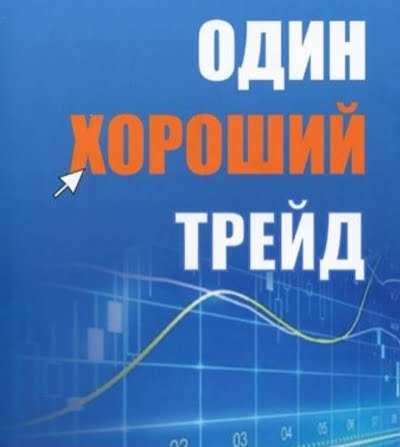The other day I had a creative conversation with a stock trader from Moscow under the nickname osmar92 (original here), which inspired me to test one idea, prompted by the distinguished osmar92.
——————————————————————————————————
osmar92: I prefer to re-login many times, liquidating a position, if I think, that I am right in the assessment.
JC: And it does not happen in this case so, that the loss from frequent prepayments will exceed, finally held, successful trade, in which you were right? :)
osmar92: TOof course this can be, but this is insurance for a possible loss. It's better to do less because of the cost, than to be in a decent minus. The task is not to do much, and often a little.
That, what makes an experienced trader cannot be copied by the inexperienced because experience prompts, what to do in a specific situation. I just gave this approach as an illustration., that you don't need to cling or as they say marry a trade, opportunities are enough. Get off where it didn't work and look elsewhere.
After all, beginners cling and stand in a losing position until the cock crows.
To your question, I can ask a counter question. What if I jumped off correctly and found an even better trade?. which worked in 2 times better than the previous one, instead of , to sit in it.
JC: So lucky. Maybe, lucky not by accident, but based on your experience and acquired intuition for such situations. But, Admit it, that an initially unprofitable situation can shoot in the right direction and predict in advance, which position out of several will be the most profitable, That's impossible. We're just playing out our statistical advantage in the long run.. One strictly according to the system, others based on acquired intuition. Second, unfortunately not available to me — probably killed the development of intuition with a strict systemic approach. Therefore, I try to check by testing on history — Will small losses from prepayments exceed large profits from one trade?. It happens in different ways, sometimes exceed, sometimes not.
That is, I wanted to say that this is all ambiguous. :)
osmar92: Basically true.
Although my vision, which can even help you in systemic( in the full sense of the word, since I also have a system), if you enter a trade, then it should immediately produce the result. Based on my experience and statistics, usually the most successful trades are, who immediately start working in the right direction, otherwise the entry point will be incorrect and therefore the system needs to be configured.
We are all different, different people have different hemispheres. But the future belongs to intuitive systems, based on mathematics and intuitive modeling. THEN, what they try to call neural networks, still far from that self-learning and flexibility , which is inherent in man
JC: It may well be like this. It will be necessary to test this idea., for example, if after entering for some time the price has not passed some minimum distance in the desired direction, then take appropriate action.
osmar92: I am more , than sure, that statistics will be on the side of that, what did I say.
JC: thanks for the idea :)
osmar92: My pleasure.
——————————————————————————————————–
here you go, we start testing the idea of, what if the price after opening a position for a certain time has not passed the minimum distance in the desired direction, then we close the position as potentially unpromising. For the inputs, let's take the widely accepted standard Aberration system.. Everyone knows her — standard breakout system, built on Bollinger channels. When the upper channel is broken, we enter long by buy-stop, upon breakdown of the lower, respectively, short. Exit on the stop of the middle line of Bollinger Bands, or , which is the same, by SMA with a period like the channels. The system itself is here.
We modify this system — if through N(1,2,3,4,5) days the price will not pass M(1,2,3,4,5)%, then we close the position the next day at the opening as unpromising. We will optimize the parameters and find the best solution. If the condition for the rate of price growth is satisfied, then we close by condition, given by the system — on the stop of the middle line of the Bollinger Channel. We test on a portfolio of all liquid American futures for the last 10 years.
As a result, the most optimal steel parameters — if for 5 days the price did not pass 1%, then close the position. These are extreme parameters — highest number of days and lowest percentage. And the further into the forest, the more firewood and the most unprofitable options were options with 1 And 2 days since 5,4,3 Percent. I.e, the more requests we have for fast profit growth in a short time after opening a position, the more we get a loss, and what is more indulgent to growth, the more tolerant of price stagnation after opening a position, the more we earn in the future. It turns out the opposite is true — the result is not what you were going to get, and the reverse.
Here is the increase in equity for 10 years, provided that if for 5 days after entry the price does not pass 1%, then close the position. Remind, this is the best result of those, who asked.
But the best result — this is the perfect result, therefore, you need to choose the average to get closer to reality. And the average result will be obtained under the condition — if the price is for 3 days after entering did not add at least 2%, then close the position.
And finally,, let's take a look at the result, when we simply do not take into account any minimum price movements for a certain time after opening a position. Just closes, as expected according to the crawling foot system (Bollinger Channel median line). And let the price behave in the intervals as it wishes — do not pay attention to her twitching. And we get the best option:
What conclusion? My so: foresee, whether the position is against us or for us — That's impossible. Now goes against us, in a second it can soar in our favor that it will not seem a little. Or vice versa. We can say that the first option happens much more often., it can be unfounded to assert the opposite, but it's better to check it out anyway, the benefit of programs for this business is now different — just choose. Otherwise, intuition can fail.…..
In this case, speculation about whether the price has stopped and therefore it is necessary to leave, whether the price has gone against us and therefore intervention is required, whether the price has risen so much that it is time to take profit and other subjective fantasies — only harm the system. That's why — opened a position, put a stop and turn off the computer so that your hands do not itch improve the system. We turn on the computer tomorrow, rearrange the crawling stop and turn it off again. And so every day :)






